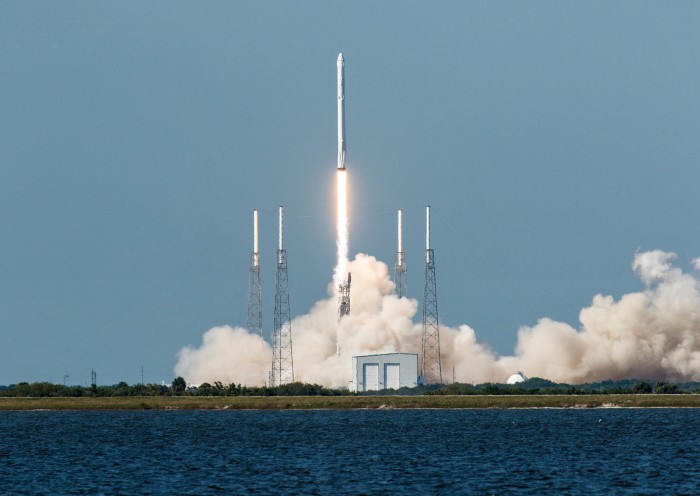Landing Rockets Is Awesome, but How Much Will Refurbishing Them Cost?
SpaceX just demonstrated a mind-blowing trick, launching a rocket and then flying it back to Earth for a neat, upright landing on a ship bobbing off the coast of Florida.
Unfortunately, that’s only part of the story when it comes to making rockets truly reusable. The company still has to show that it can restore a rocket to the standard needed for another launch, and it’s unclear just how much that might cost.
Let’s not take anything away from the sea landing, though. Lars Blackmore, a member of the team developing the control system for SpaceX’s rocket returns, compared an ocean landing to “balancing a rubber broomstick on your hand in a windstorm while standing on a trampoline” during a talk he gave at last year’s EmTech conference in Cambridge, Massachusetts. Blackmore was also one of our Innovators Under 35 for 2015.
Speaking when SpaceX still hadn’t successfully returned a rocket to the ground after launch, Blackmore said that making sure rockets that landed were fit for further launches would also be a significant challenge. “The overall reusability problem is not just the landing,” he told me. “After it lands, how do you turn it around to where it can be launched again?”
SpaceX has previously said that it expects to be able to fly its rockets “with no required refurbishment.” However, during each launch a rocket experiences extreme temperature fluctuations, pressure changes, and vibrations, all of which may cause damage that needs to be repaired.

History also shows that this can be expensive, especially if the cargo is precious. NASA’s space shuttle, for instance, was designed to be largely reusable, but in reality, extensive repairs and inspections were needed before each new launch. As The Verge points out, this drove the cost of each shuttle mission up to between $450 million and $1.5 billion.
Each SpaceX Falcon 9 first-stage rocket costs $60 million to make, so refurbishment would probably be far cheaper. SpaceX will also try to design its rockets to be more reusable. Blackmore said his team would also work toward this. “We want to be able to recover as many as possible, and making the landing more and more efficient means that we can recover more rockets,” he said.
(Sources: Scientific American, “35 Innovators Under 35: Lars Blackmore,” “SpaceX Soft Lands Falcon 9 Rocket First Stage,”The Verge)
Keep Reading
Most Popular
Large language models can do jaw-dropping things. But nobody knows exactly why.
And that's a problem. Figuring it out is one of the biggest scientific puzzles of our time and a crucial step towards controlling more powerful future models.
The problem with plug-in hybrids? Their drivers.
Plug-in hybrids are often sold as a transition to EVs, but new data from Europe shows we’re still underestimating the emissions they produce.
Google DeepMind’s new generative model makes Super Mario–like games from scratch
Genie learns how to control games by watching hours and hours of video. It could help train next-gen robots too.
How scientists traced a mysterious covid case back to six toilets
When wastewater surveillance turns into a hunt for a single infected individual, the ethics get tricky.
Stay connected
Get the latest updates from
MIT Technology Review
Discover special offers, top stories, upcoming events, and more.